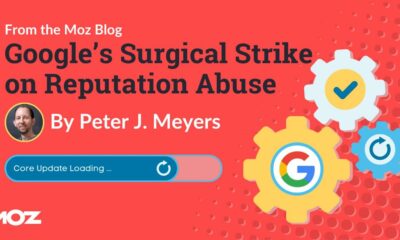SEO
SEOs, Are You Using These 6 Mental Models?
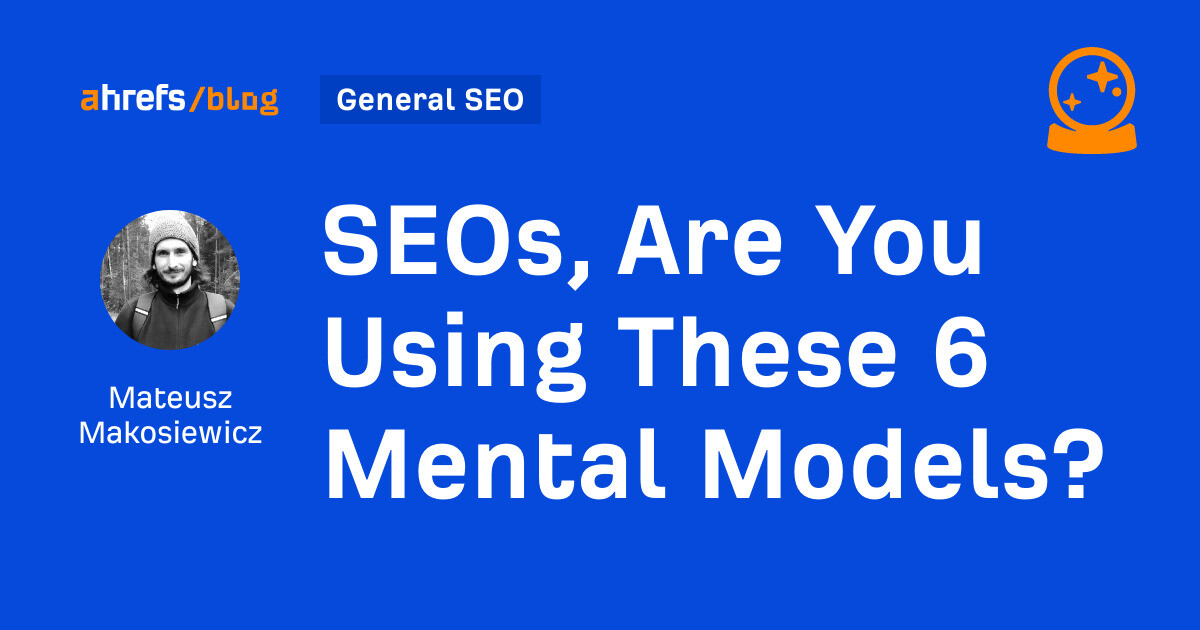
People use mental models to comprehend reality, solve problems, and make decisions in everyday life. SEO is not an exception here, yet it’s not a topic you often hear about in this industry.
The thing is, you need to be careful with mental models because they’re sneaky. We tend to develop them during our lives, inherit them from our colleagues and mentors, and rely on them almost instinctively while not fully aware of their influence or the existence of better alternatives.
So, let’s talk about mental models you will find helpful in your SEO work and the ones you should approach with caution.
3 helpful mental models
In the noisy, uncertain world of SEO, these will be your north star.
First principles thinking is a problem-solving approach that involves breaking down complex problems into their most basic elements and reassembling them from the ground up.
It’s about asking oneself what is absolutely true about a situation and then reasoning up from there to create new solutions.
Uncertainty is a chronic condition in SEO. And it is so by design because the whole industry is based on Google’s secrets. Access to the truth is extremely limited. We got to the point that we got used to accepting speculation and theories on SEO so much that we started to crave them.
This is where the first principles come in. Whenever you need a brand new solution for a problem or when you feel that you’ve gone too far into speculation, come back to the first principles — things that have the best chance to be true in this industry. For example:
- Conventional wisdom is that higher volume is better, but the first principle of blogging is reaching qualified people and influencing sales. So, it’s better to target specific high-intent low-volume keywords and than irrelevant high-volume keywords.
- The first principle of SEO content is distribution via the organic search channel. That’s why it’s so hard to promote it on other channels like social media — better to let go.
- Google aims to provide the best possible experience by delivering the most relevant and high-quality content. Yet, some people ignore this first principle, try to game the system, and lose everything almost overnight when the system catches up.
The Pareto Principle (aka the 80/20 rule) is about a disproportionate relationship between inputs and outputs, effort and results, or causes and effects. A small number of causes (20%) often leads to a large number of effects (80%).
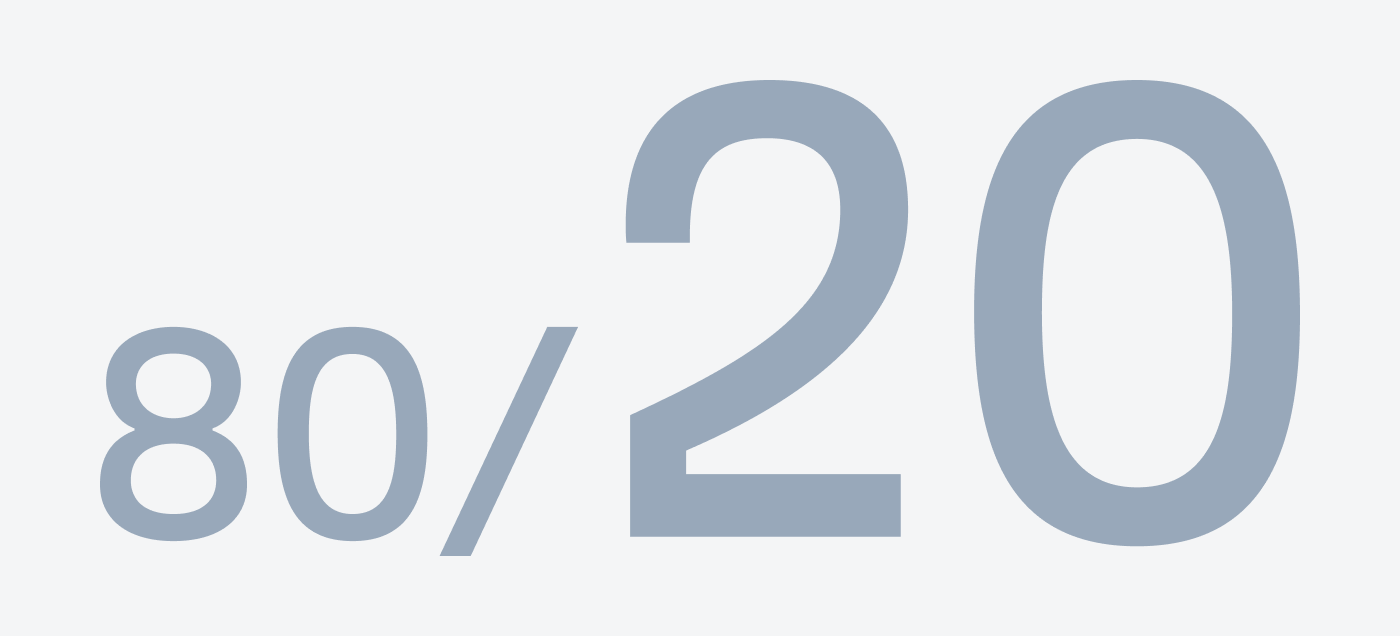

This concept was named after Vilfredo Pareto, an Italian economist who, in 1906, noticed that 80% of Italy’s land was owned by 20% of the population.
If we use this principle as a mental model in decision-making, we’ll find it easier to prioritize work. It’s ok to ignore some things because they likely won’t matter that much. The result that you’re after will come from focusing on the things that will likely have the biggest impact, and not from spreading yourself too thin.
For example, if you want to build links to your site, pitch your best content. That can be the content that has already proven to earn links in the past.


Or if you need to recover some of that lost traffic, home in on the pages that lost the most traffic.
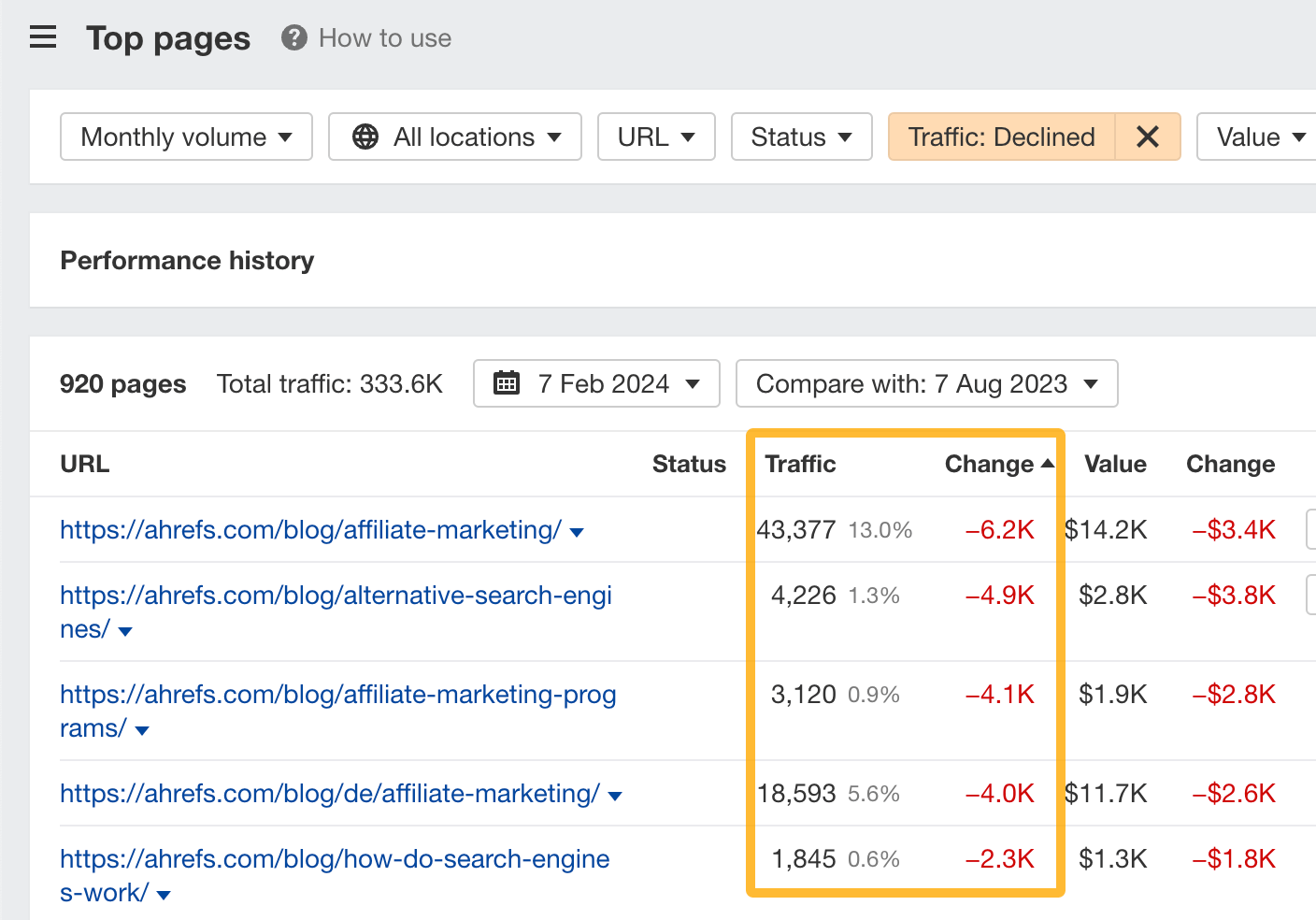

The key is to treat the 80/20 as an approximation, a heuristic, and not take the numbers literally. To illustrate, roughly 80% of our site’s traffic comes from no more than 6% of pages.
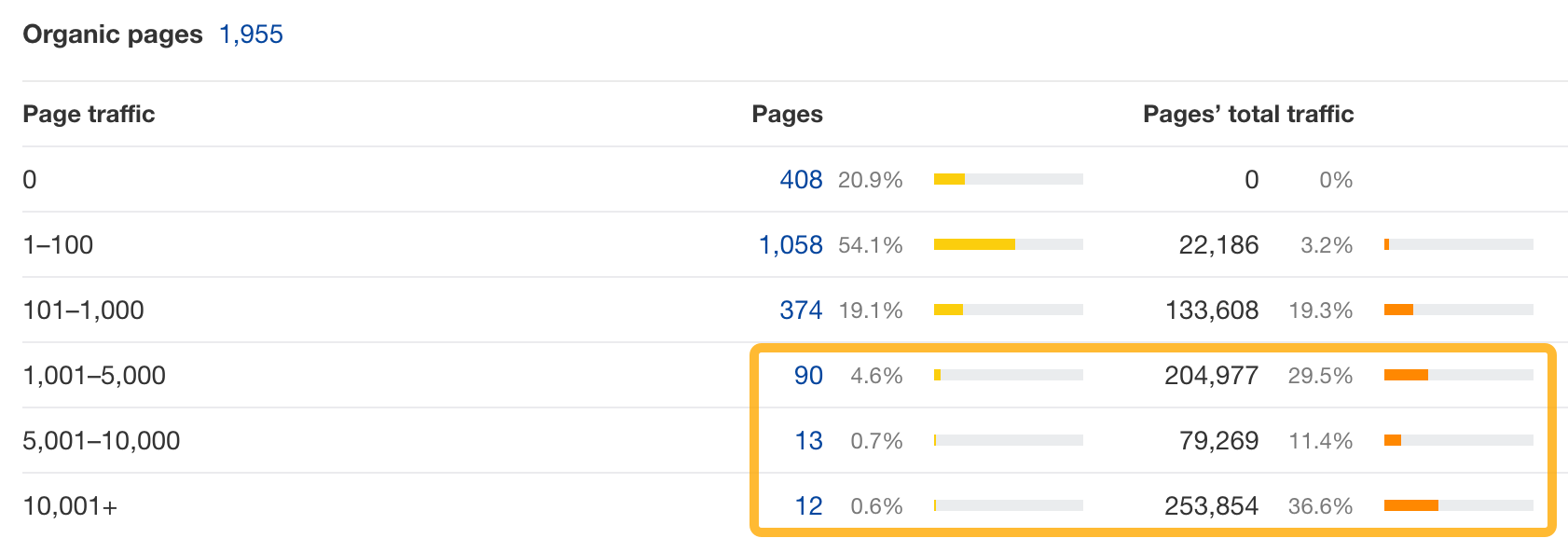

But on the other hand, if we try to find the top 20% pages that contribute to the traffic the most, we’ll find that they bring not 80% but 96.8% traffic. However you look at it, the idea still holds — a small amount of causes led to a large portion of effects.
“It takes all the running you can do, to keep in the same place.”
Sounds very much like SEO already, doesn’t it?
This quote comes from Lewis Carroll’s “Through the Looking-Glass,” and it’s how the Red Queen explains to Alice the nature of her kingdom, where it requires constant effort just to maintain one’s current position.
It was used to name an evolutionary biology theory which posits that each species must adapt and evolve not just for incremental gains but for survival, as their competitors are also evolving. Sorry, we’re in an endless race.
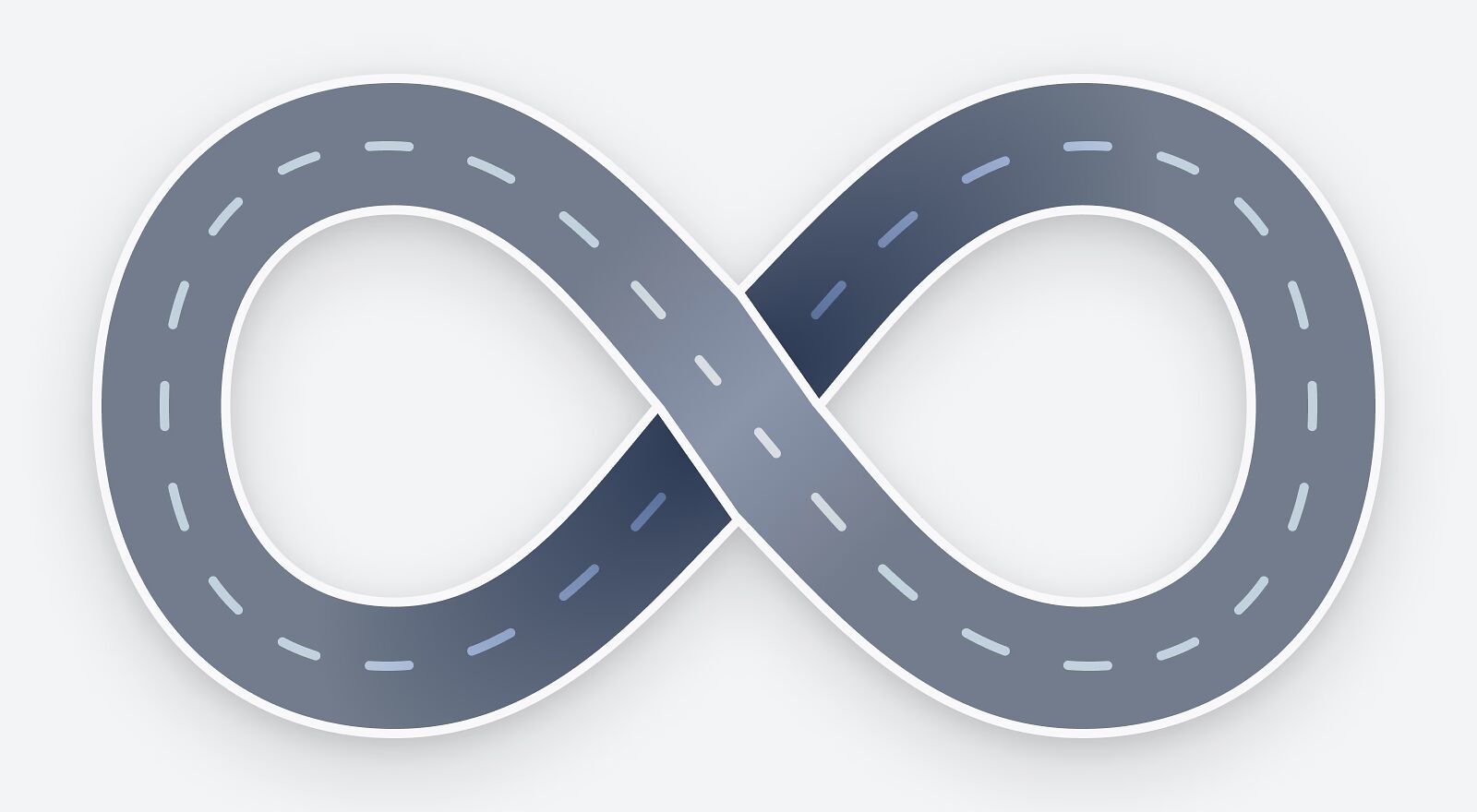

You can probably already guess how this applies to SEO — rankings. If you want to maintain high rankings, you can’t stop improving your pages. There will always be enough competitors to challenge your position.
But in our world, pressure comes from competitors and the environment. Google keeps evolving too, pushing the bar for content higher, making elements that used to give you an edge a standard.
I’m sure we’ve all been there – even our top backlink-earning, top traffic-generating, most time-consuming content gets pushed down. But if you keep optimizing, you get a chance to come back to the top.
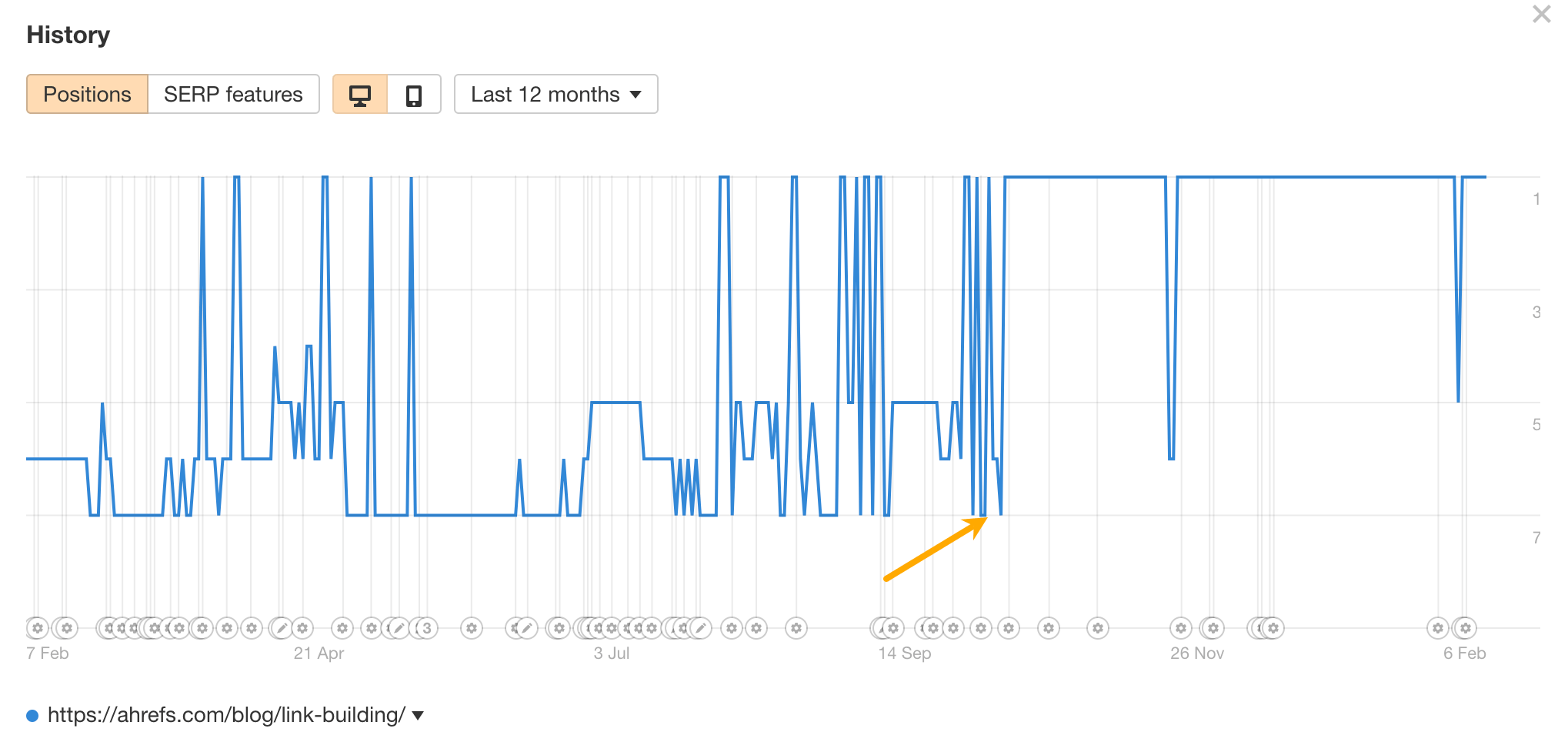

This mental model is another way of saying that SEO works best as an always-on strategy without a set end date or final goal.
3 mental models to watch out for
It’s not so much about avoiding them but being able to spot them when they happen or could happen.
A local maximum (aka local optimum) refers to a solution that is the best solution within a neighboring set of solutions, but not necessarily the best possible solution overall (global optimum).


So if you’re feeling that you’re spending immense effort just to make marginal improvements, you have to be willing to assume that you’ve hit a local maxima. Then, the question to ask is: what can I do differently?
Here’s an example.
Until November last year, traffic to our site was a series of local optima. Our content marketing was delivering the results, but the growth was relatively slow. Obviously, we were doing the same tried and tested stuff. But then we launched two programmatic SEO projects that instantly elevated us to a level we’d have to work years for — look how fast the yellow line grew (pages) and how that corresponded with the orange line (traffic).
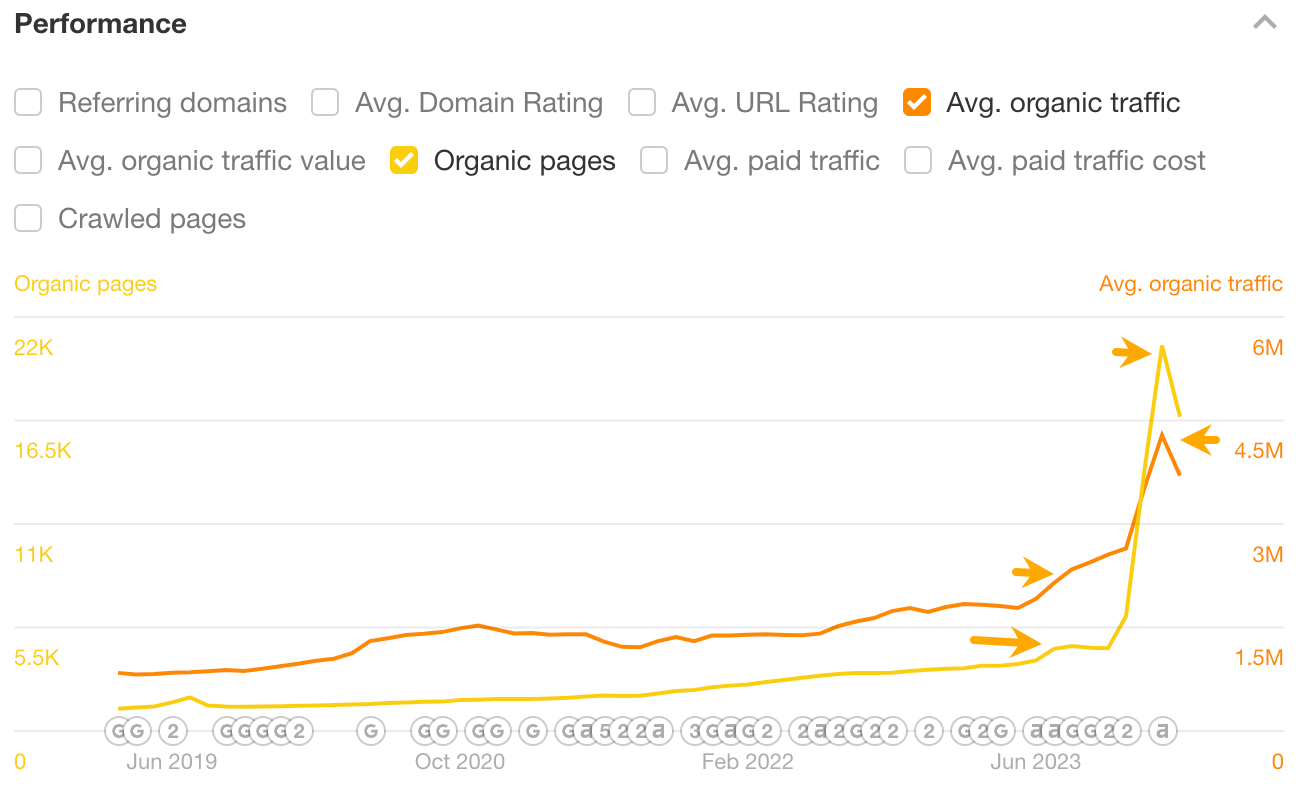

The sunk cost fallacy is a cognitive bias that occurs when people continue to do something as a result of previously invested resources (time, money, effort) despite new evidence suggesting that the current path will not lead to a beneficial outcome.
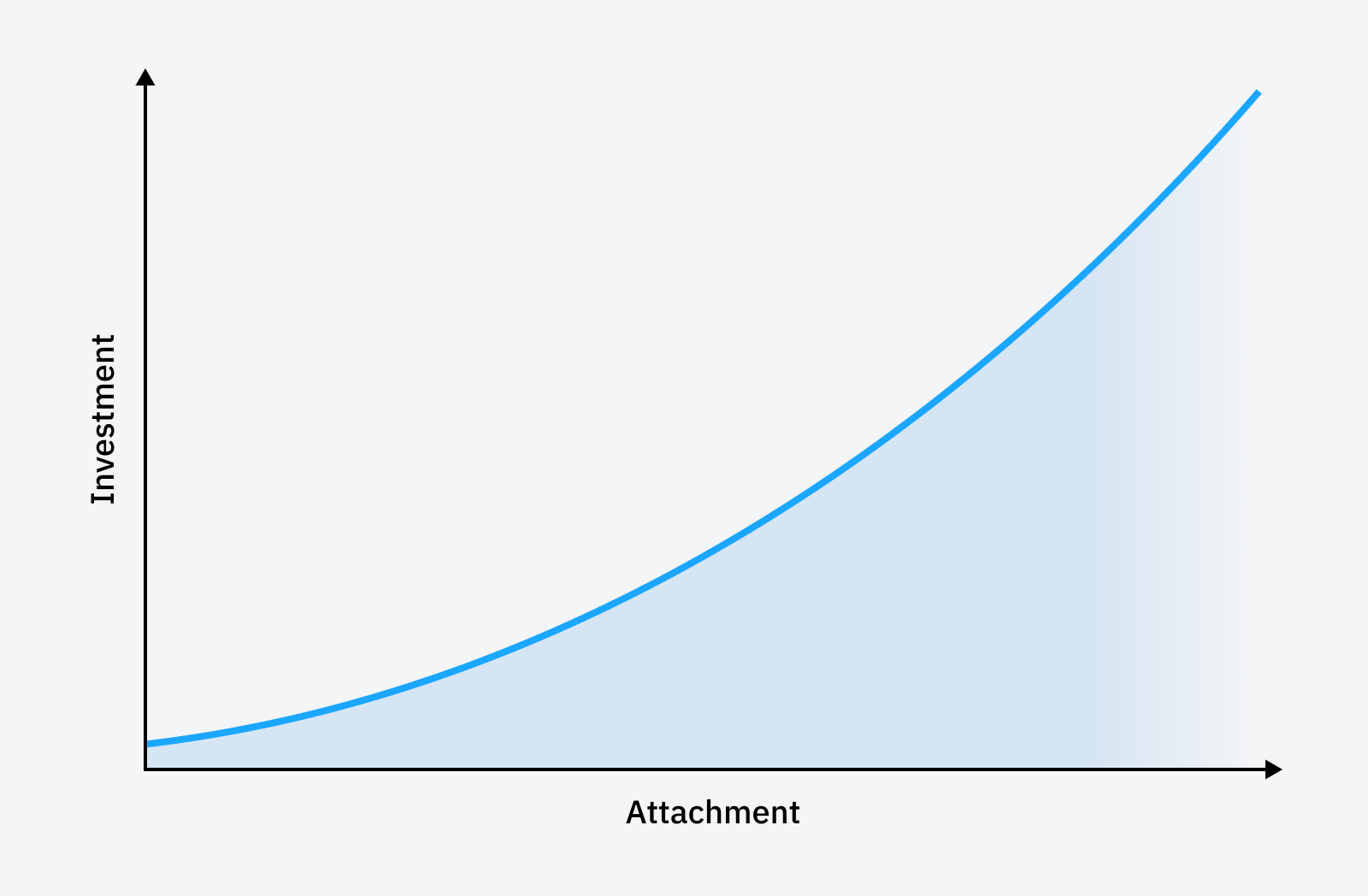

We all know SEO is a long-term game, right? Strategies like these are crowded with long-term projects with big time and money investments. Sometimes, despite the investments, you just can’t go beyond a certain level of traffic, backlinks, etc.
Now, this mental model, this voice in your head, will tell you to keep going down the same path no matter what. Loss aversion kicks in, acting like a defense mechanism for your past selves and actions. And the more aggressive and blind the “hustle” culture is at one’s team, the harder it is to see clearly.
But, overall, it could be better for you and the company to let it go and focus on something else. You can even come back to it later with a fresh mind. But continuing something just because you’ve been doing it for some time is a losing strategy.
Example. Despite several attempts and time counted in years, Ahrefs doesn’t rank for “seo”.


Sad but true. And from our point of view, it’s frustrating. Almost like we’re the only ones not to get invited to the party, the only ones not to graduate from high school… you get the idea.
But not ranking for “SEO” hasn’t hindered our growth, so it’s better to cut losses and deal with unfulfilled ambition than to let that goal hold us back from other projects (like that programmatic project mentioned above).
Confirmation bias is the tendency to give more attention and weight to data that support one’s own beliefs, while simultaneously dismissing or underestimating evidence that contradicts those beliefs.
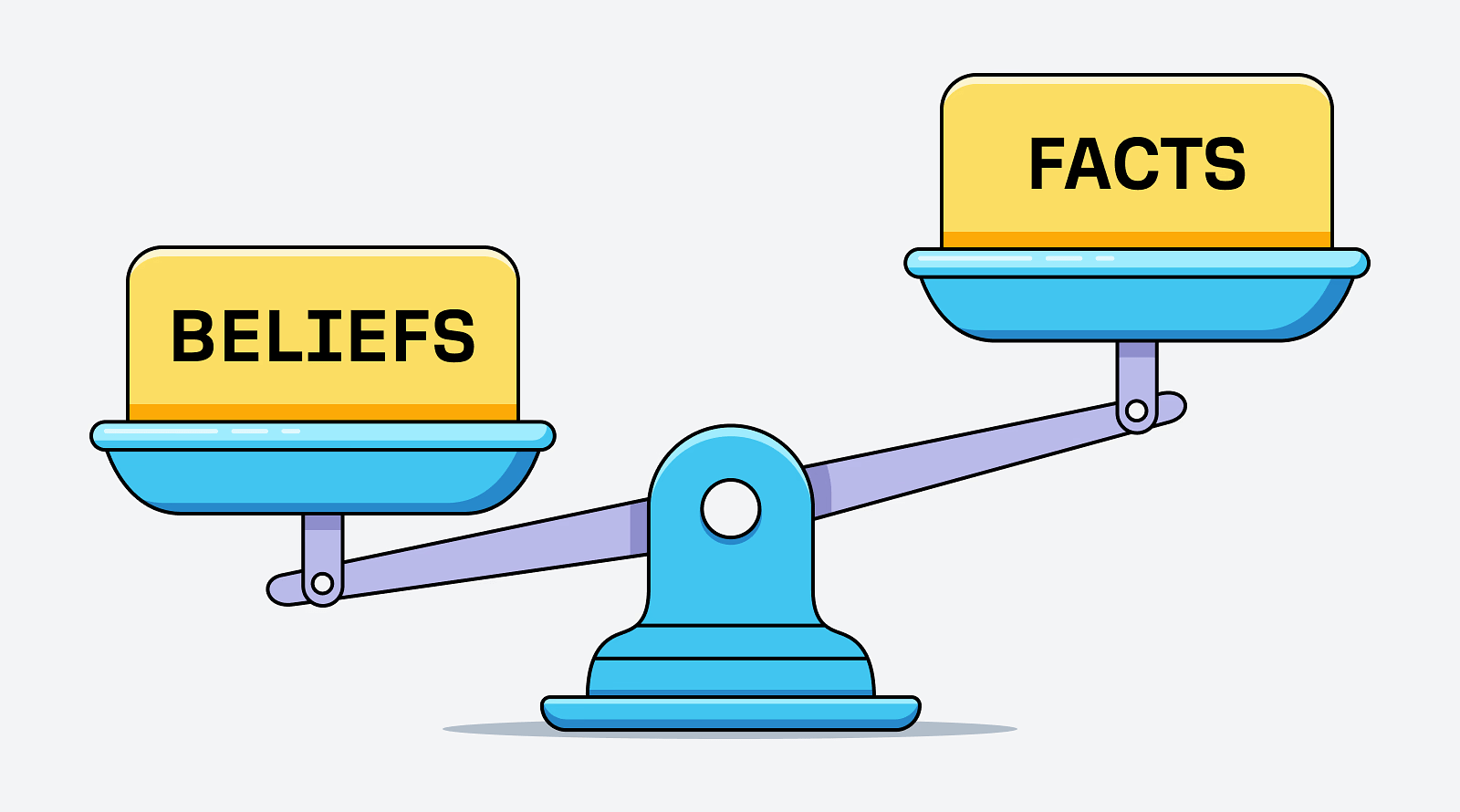

We’re all guilty of this. It’s human nature. And it’s not exclusively a bad thing. I mean, in some situations, this tendency can keep us on “the bright side” and help us go through tough times or keep our motivation up.
So, I think that it’s not something to get out of your system completely. Just be mindful of situations where this can negatively affect your judgment:
- Selective evidence in ranking factors. You see a page ranking high, and you think it’s because of an aspect you strongly believe in, disregarding all of the evidence against it (e.g., long-form content, social signals).
- Bias in keyword selection. Your keyword selection runs along the lines of your beliefs about the audience preferences without substantial evidence to back up these beliefs.
- Bias in strategy development. After developing a new strategy, you encounter a talk or an article advocating a similar approach, which immediately reinforces your confidence in this strategy.
- Focus on confirmatory data during audits. During a content audit, you find a small piece of data that confirms your belief. As a result, you may prioritize minor findings over more significant but less personally affirming data.
- Overconfidence in familiar tactics. Leaning on SEO tactics that have worked in the past, you develop a sense of overconfidence in them. You resist trying anything new or the idea that a dip in performance comes from an unfamiliar factor.
Keep learning
If you like what you’re reading, I think you will find other mental models fascinating:
Want to share models you find useful? Ping me on X or LinkedIn.
SEO
Google Rolls Out New ‘Web’ Filter For Search Results

Google is introducing a filter that allows you to view only text-based webpages in search results.
The “Web” filter, rolling out globally over the next two days, addresses demand from searchers who prefer a stripped-down, simplified view of search results.
Danny Sullivan, Google’s Search Liaison, states in an announcement:
“We’ve added this after hearing from some that there are times when they’d prefer to just see links to web pages in their search results, such as if they’re looking for longer-form text documents, using a device with limited internet access, or those who just prefer text-based results shown separately from search features.”
We’ve added this after hearing from some that there are times when they’d prefer to just see links to web pages in their search results, such as if they’re looking for longer-form text documents, using a device with limited internet access, or those who just prefer text-based…
— Google SearchLiaison (@searchliaison) May 14, 2024
The new functionality is a throwback to when search results were more straightforward. Now, they often combine rich media like images, videos, and shopping ads alongside the traditional list of web links.
How It Works
On mobile devices, the “Web” filter will be displayed alongside other filter options like “Images” and “News.”
If Google’s systems don’t automatically surface it based on the search query, desktop users may need to select “More” to access it.
 Screenshot from: twitter.com/GoogleSearchLiaison, May 2024.
Screenshot from: twitter.com/GoogleSearchLiaison, May 2024.More About Google Search Filters
Google’s search filters allow you to narrow results by type. The options displayed are dynamically generated based on your search query and what Google’s systems determine could be most relevant.
The “All Filters” option provides access to filters that are not shown automatically.
Alongside filters, Google also displays “Topics” – suggested related terms that can further refine or expand a user’s original query into new areas of exploration.
For more about Google’s search filters, see its official help page.
Featured Image: egaranugrah/Shutterstock
SEO
Why Google Can’t Tell You About Every Ranking Drop

In a recent Twitter exchange, Google’s Search Liaison, Danny Sullivan, provided insight into how the search engine handles algorithmic spam actions and ranking drops.
The discussion was sparked by a website owner’s complaint about a significant traffic loss and the inability to request a manual review.
Sullivan clarified that a site could be affected by an algorithmic spam action or simply not ranking well due to other factors.
He emphasized that many sites experiencing ranking drops mistakenly attribute it to an algorithmic spam action when that may not be the case.
“I’ve looked at many sites where people have complained about losing rankings and decide they have a algorithmic spam action against them, but they don’t. “
Sullivan’s full statement will help you understand Google’s transparency challenges.
Additionally, he explains why the desire for manual review to override automated rankings may be misguided.
Two different things. A site could have an algorithmic spam action. A site could be not ranking well because other systems that *are not about spam* just don’t see it as helpful.
I’ve looked at many sites where people have complained about losing rankings and decide they have a…
— Google SearchLiaison (@searchliaison) May 13, 2024
Challenges In Transparency & Manual Intervention
Sullivan acknowledged the idea of providing more transparency in Search Console, potentially notifying site owners of algorithmic actions similar to manual actions.
However, he highlighted two key challenges:
- Revealing algorithmic spam indicators could allow bad actors to game the system.
- Algorithmic actions are not site-specific and cannot be manually lifted.
Sullivan expressed sympathy for the frustration of not knowing the cause of a traffic drop and the inability to communicate with someone about it.
However, he cautioned against the desire for a manual intervention to override the automated systems’ rankings.
Sullivan states:
“…you don’t really want to think “Oh, I just wish I had a manual action, that would be so much easier.” You really don’t want your individual site coming the attention of our spam analysts. First, it’s not like manual actions are somehow instantly processed. Second, it’s just something we know about a site going forward, especially if it says it has change but hasn’t really.”
Determining Content Helpfulness & Reliability
Moving beyond spam, Sullivan discussed various systems that assess the helpfulness, usefulness, and reliability of individual content and sites.
He acknowledged that these systems are imperfect and some high-quality sites may not be recognized as well as they should be.
“Some of them ranking really well. But they’ve moved down a bit in small positions enough that the traffic drop is notable. They assume they have fundamental issues but don’t, really — which is why we added a whole section about this to our debugging traffic drops page.”
Sullivan revealed ongoing discussions about providing more indicators in Search Console to help creators understand their content’s performance.
“Another thing I’ve been discussing, and I’m not alone in this, is could we do more in Search Console to show some of these indicators. This is all challenging similar to all the stuff I said about spam, about how not wanting to let the systems get gamed, and also how there’s then no button we would push that’s like “actually more useful than our automated systems think — rank it better!” But maybe there’s a way we can find to share more, in a way that helps everyone and coupled with better guidance, would help creators.”
Advocacy For Small Publishers & Positive Progress
In response to a suggestion from Brandon Saltalamacchia, founder of RetroDodo, about manually reviewing “good” sites and providing guidance, Sullivan shared his thoughts on potential solutions.
He mentioned exploring ideas such as self-declaration through structured data for small publishers and learning from that information to make positive changes.
“I have some thoughts I’ve been exploring and proposing on what we might do with small publishers and self-declaring with structured data and how we might learn from that and use that in various ways. Which is getting way ahead of myself and the usual no promises but yes, I think and hope for ways to move ahead more positively.”
Sullivan said he can’t make promises or implement changes overnight, but he expressed hope for finding ways to move forward positively.
Featured Image: Tero Vesalainen/Shutterstock
SEO
56 Google Search Statistics to Bookmark for 2024

If you’re curious about the state of Google search in 2024, look no further.
Each year we pick, vet, and categorize a list of up-to-date statistics to give you insights from trusted sources on Google search trends.
- Google has a web index of “about 400 billion documents”. (The Capitol Forum)
- Google’s search index is over 100 million gigabytes in size. (Google)
- There are an estimated 3.5 billion searches on Google each day. (Internet Live Stats)
- 61.5% of desktop searches and 34.4% of mobile searches result in no clicks. (SparkToro)
- 15% of all Google searches have never been searched before. (Google)
- 94.74% of keywords get 10 monthly searches or fewer. (Ahrefs)
- The most searched keyword in the US and globally is “YouTube,” and youtube.com gets the most traffic from Google. (Ahrefs)
- 96.55% of all pages get zero search traffic from Google. (Ahrefs)
- 50-65% of all number-one spots are dominated by featured snippets. (Authority Hacker)
- Reddit is the most popular domain for product review queries. (Detailed)
- Google is the most used search engine in the world, with a mobile market share of 95.32% and a desktop market share of 81.95%. (Statista)


- Google.com generated 84.2 billion visits a month in 2023. (Statista)
- Google generated $307.4 billion in revenue in 2023. (Alphabet Investor Relations)
- 63.41% of all US web traffic referrals come from Google. (SparkToro)
- 92.96% of global traffic comes from Google Search, Google Images, and Google Maps. (SparkToro)
- Only 49% of Gen Z women use Google as their search engine. The rest use TikTok. (Search Engine Land)
- 58.67% of all website traffic worldwide comes from mobile phones. (Statista)
- 57% of local search queries are submitted using a mobile device or tablet. (ReviewTrackers)


- 51% of smartphone users have discovered a new company or product when conducting a search on their smartphones. (Think With Google)
- 54% of smartphone users search for business hours, and 53% search for directions to local stores. (Think With Google)
- 18% of local searches on smartphones lead to a purchase within a day vs. 7% of non-local searches. (Think With Google)
- 56% of in-store shoppers used their smartphones to shop or research items while they were in-store. (Think With Google)
- 60% of smartphone users have contacted a business directly using the search results (e.g., “click to call” option). (Think With Google)
- 63.6% of consumers say they are likely to check reviews on Google before visiting a business location. (ReviewTrackers)
- 88% of consumers would use a business that replies to all of its reviews. (BrightLocal)
- Customers are 2.7 times more likely to consider a business reputable if they find a complete Business Profile on Google Search and Maps. (Google)
- Customers are 70% more likely to visit and 50% more likely to consider purchasing from businesses with a complete Business Profile. (Google)
- 76% of people who search on their smartphones for something nearby visit a business within a day. (Think With Google)
- 28% of searches for something nearby result in a purchase. (Think With Google)
- Mobile searches for “store open near me” (such as, “grocery store open near me” have grown by over 250% in the last two years. (Think With Google)
- People use Google Lens for 12 billion visual searches a month. (Google)
- 50% of online shoppers say images helped them decide what to buy. (Think With Google)
- There are an estimated 136 billion indexed images on Google Image Search. (Photutorial)
- 15.8% of Google SERPs show images. (Moz)
- People click on 3D images almost 50% more than static ones. (Google)
- More than 800 million people use Google Discover monthly to stay updated on their interests. (Google)
- 46% of Google Discover URLs are news sites, 44% e-commerce, 7% entertainment, and 2% travel. (Search Engine Journal)
- Even though news sites accounted for under 50% of Google Discover URLs, they received 99% of Discover clicks. (Search Engine Journal)


- Most Google Discover URLs only receive traffic for three to four days, with most of that traffic occurring one to two days after publishing. (Search Engine Journal)
- The clickthrough rate (CTR) for Google Discover is 11%. (Search Engine Journal)
- 91.45% of search volumes in Google Ads Keyword Planner are overestimates. (Ahrefs)
- For every $1 a business spends on Google Ads, they receive $8 in profit through Google Search and Ads. (Google)
- Google removed 5.5 billion ads, suspended 12.7 million advertiser accounts, restricted over 6.9 billion ads, and restricted ads from showing up on 2.1 billion publisher pages in 2023. (Google)
- The average shopping click-through rate (CTR) across all industries is 0.86% for Google Ads. (Wordstream)
- The average shopping cost per click (CPC) across all industries is $0.66 for Google Ads. (Wordstream)
- The average shopping conversion rate (CVR) across all industries is 1.91% for Google Ads. (Wordstream)
- 58% of consumers ages 25-34 use voice search daily. (UpCity)
- 16% of people use voice search for local “near me” searches. (UpCity)
- 67% of consumers say they’re very likely to use voice search when seeking information. (UpCity)
- Active users of the Google Assistant grew 4X over the past year, as of 2019. (Think With Google)
- Google Assistant hit 1 billion app installs. (Android Police)
- AI-generated answers from SGE were available for 91% of entertainment queries but only 17% of healthcare queries. (Statista)
- The AI-generated answers in Google’s Search Generative Experience (SGE) do not match any links from the top 10 Google organic search results 93.8% of the time. (Search Engine Journal)
- Google displays a Search Generative element for 86.8% of all search queries. (Authoritas)


- 62% of generative links came from sources outside the top 10 ranking organic domains. Only 20.1% of generative URLs directly match an organic URL ranking on page one. (Authoritas)
- 70% of SEOs said that they were worried about the impact of SGE on organic search (Aira)
Learn more
Check out more resources on how Google works:
-

 SEO6 days ago
SEO6 days agoHow to Use Keywords for SEO: The Complete Beginner’s Guide
-

 MARKETING7 days ago
MARKETING7 days agoHow To Protect Your People and Brand
-

 MARKETING4 days ago
MARKETING4 days agoAdvertising on Hulu: Ad Formats, Examples & Tips
-

 MARKETING5 days ago
MARKETING5 days agoUpdates to data build service for better developer experiences
-

 MARKETING2 days ago
MARKETING2 days ago18 Events and Conferences for Black Entrepreneurs in 2024
-

 WORDPRESS5 days ago
WORDPRESS5 days agoBest WordPress Plugins of All Time: Updated List for 2024
-

 MARKETING6 days ago
MARKETING6 days agoThe Ultimate Guide to Email Marketing
-

 WORDPRESS5 days ago
WORDPRESS5 days agoShopify Could Be Undervalued Based On A Long-Term Horizon






